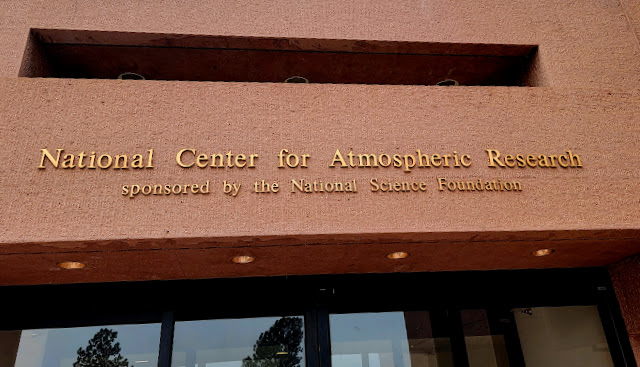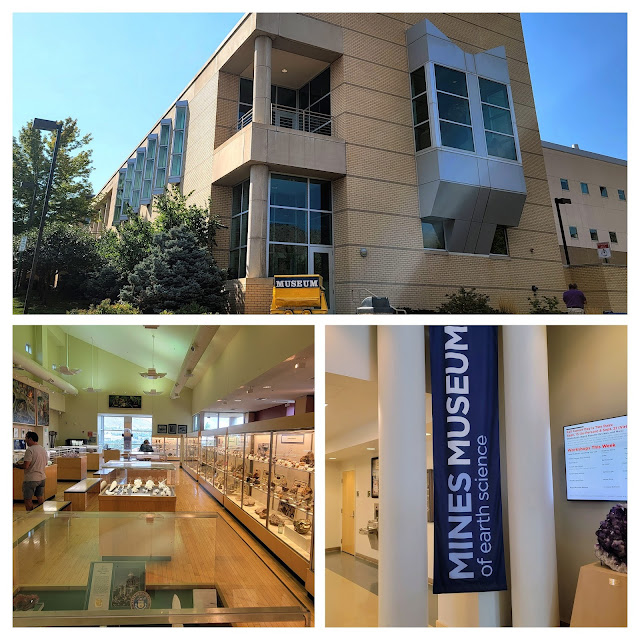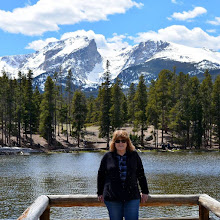The fall season comes early in Colorado's higher elevations. My husband and I know that as September approaches its last days it is nice to enjoy a car drive in the mountains to witness all the beautiful autumn colors at their peak. One of our favorite drives is on Guanella Pass from Grant to Georgetown.
Sunday, September 29, 2024
Fall Color on Guanella Pass in Colorado
Sunday, September 22, 2024
A Visit to the National Center For Atmospheric Research
This past year my husband and I, along with a group of friends, visited the National Center for Atmospheric Research also known as "NCAR," located in Boulder, Colorado. NCAR was established by the National Science Foundation in 1960 to provide the university community with world-class facilities and services beyond any individual institution's reach. It was the National Science Foundation's first federally funded research and development center, managed by the University Corporation for Atmospheric Research, "UCAR". a nonprofit consortium of more than 120 colleges and universities. This building was their headquarters, with additional facilities located in Wyoming and Hawaii.
*All photos on this blog spot will be enlarged for easier viewing by right-clicking on them.
We were a group of 9, so we had an NCAR member as a guide for our visit who explained their mission, showed us the exhibits in the visitor's center, and answered our questions.
She explained the NCAR Mission:
- To understand the behavior of the atmosphere and related Earth and geospace systems
- To support, enhance, and extend the capabilities of the university community and the broader scientific community, nationally and internationally
- To foster the transfer of knowledge and technology for the betterment of life on Earth
Pei was greatly influenced by the Colorado landscape and other architectural marvels to create his design. He considered the NCAR Mesa building to be one of his favorite designs and a major turning point in his illustrious career.
"We believe this work is more important than ever. As society struggles to deal with rapidly changing environmental conditions, the need for relevant information and services continues to grow. The hazards of long-term atmospheric and climate changes, air pollution episodes, extreme weather, geomagnetic storms, and related impacts such as drought, storm surges, and wildfires take a significant toll in terms of human life and economic loss."
Sunday, September 15, 2024
Oh Deer!
I haven't had the chance to write much about what's been happening in our local area this summer, and now it's almost fall! I didn't plant my usual vegetable and flower garden this summer because we traveled to New York and went on an East Coast Cruise in June. In a way, I'm glad we didn't plant anything because this trio of animals has been hanging out in my backyard almost every day, eating everything. The doe looks thin in this photo because she was still nursing her twin fawns. She's now back to normal weight as the fawns are older, and almost exclusively eat plants.
This is another deer trio that has been visiting lately--three young bucks!
I know I can spray a deer repellent on the shrubs to deter them, but I don't like to apply chemicals that can affect the birds, insects and bees, rabbits, squirrels, etc, that also visit my backyard, so I've learned to tolerate them munching on everything.
To successfully grow any plant that grows, I have found that I need to protect it by surrounding it with chicken wire fences. As a result, a handful of perennials have been able to bloom this summer, along with some vibrant sunflowers. It was nice to see a bit of color!
Fall in Colorado is beautiful, and I look forward to sharing some photos soon.
Be sure to check back!
Sunday, September 8, 2024
A Geology Field Trip In My Colorado Front Range Neighborhood!
I live in an area along the Colorado Front Range rich in geological features and natural beauty!
We moved to another area where we examined whitish rock formations among red rock.















































































